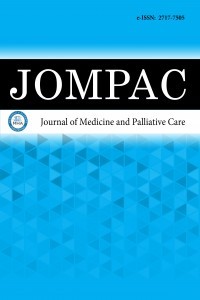1.
Baliyan V, Tajmir S, Hedgire SS, Ganguli S, Prabhakar AM. Lowerextremity venous reflux. Cardiovasc Diagn Ther. 2016;6(6):533-543. doi:10.21037/cdt.2016.11.14
2.
Kurz X, Kahn SR, Abenhaim L, et al. Chronic venous disordersof the leg: epidemiology, outcomes, diagnosis and management.Summary of an evidence-based report of the VEINES task force.Venous Insufficiency Epidemiologic and Economic Studies. IntAngiol. 1999;18(2):83-102.
3.
Sadick NS. Predisposing factors of varicose and telangiectaticleg veins. J Dermatol Surg Oncol. 1992; 18(10):883-886.doi:10.1111/j.1524-4725.1992.tb02921.x
4.
Fowkes FG, Lee AJ, Evans CJ, Allan PL, Bradbury AW, RuckleyCV. Lifestyle risk factors for lower limb venous reflux in thegeneral population: Edinburgh Vein Study. Int J Epidemiol.2001;30(4):846-852. doi:10.1093/ije/30.4.846
5.
Gloviczki P, Comerota AJ, Dalsing MC, et al. The care of patientswith varicose veins and associated chronic venous diseases:clinical practice guidelines of the Society for Vascular Surgery andthe American Venous Forum. J Vasc Surg. 2011;53(5 Suppl):2S-48S. doi:10.1016/j.jvs.2011.01.079
6.
Bromen K, Pannier-Fischer F, Stang A, Rabe E, Bock E, Jockel KH.Should sex specific differences in venous diseases be explainedby pregnancies and hormone intake? Gesundheitswesen.2004;66(3):170-174. Lassen sich geschlechtsspezifischeunterschiede bei venenerkrankungen durch schwangerschaftenund hormoneinnahme erklaren? doi:10.1055/s-2004-813019
7.
Ciardullo AV, Panico S, Bellati C, et al. High endogenous estradiolis associated with increased venous distensibility and clinicalevidence of varicose veins in menopausal women. J Vasc Surg.2000;32(3): 544-549. doi:10.1067/mva.2000.107768
8.
Hetemaki N, Mikkola TS, Tikkanen MJ, et al. Adipose tissueestrogen production and metabolism in premenopausal women.J Steroid Biochem Mol Biol. 2021;209:105849. doi:10.1016/j.jsbmb.2021.105849
9.
Grow DR. Metabolism of endogenous and exogenousreproductive hormones. Obstet Gynecol Clin North Am. Sep2002;29(3):425-436. doi:10.1016/s0889-8545(02)00009-8
10.
Seeger H, Mueck AO, Lippert TH. Effect of estradiol metaboliteson prostacyclin synthesis in human endothelial cell cultures. LifeSci. 1999;65(13):PL167-170. doi:10.1016/s0024-3205(99)00383-5
11.
Selles J, Polini N, Alvarez C, Massheimer V. Novel action ofestrone on vascular tissue: regulation of NOS and COX activity.Steroids. 2005;70(4):251-256. doi:10.1016/j.steroids.2004.10.012
12.
Massheimer V, Polini N, Alvarez C, Benozzi S, RauschembergerMB, Selles J. Signal transduction pathways involved innon-genomic action of estrone on vascular tissue. Steroids.2006;71(10):857-864. doi:10.1016/j.steroids.2006.05.015
13.
Chervenak J. Bioidentical hormones for maturing women.Maturitas. 2009;64(2):86-89. doi:10.1016/j. maturitas.2009.08.002
14.
Crescitelli MC, Rauschemberger MB, Cepeda S, SandovalM, Massheimer VL. Role of estrone on the regulation ofosteoblastogenesis. Mol Cell Endocrinol. 2019;498:110582.doi:10.1016/j.mce.2019. 110582
15.
Serra R, Gallelli L, Perri P, et al. Estrogen receptors and chronicvenous disease. Eur J Vasc Endovasc Surg. 2016;52(1):114-118.doi:10.1016/j.ejvs.2016.04.020
16.
Asbeutah AM, Al-Enezi M, Al-Sharifi NM, et al. Changes in thediameter and valve closure time of leg veins across the menstrualcycle. J Ultrasound Med. 2014;33(5):803-809.
17.
Asbeutah AM, Al-Azemi M, Al-Sarhan S, Almajran A, AsfarSK. Changes in the diameter and valve closure time of legveins in primigravida women during pregnancy. J Vasc SurgVenous Lymphat Disord. 2015;3(2):147-153. doi:10.1016/j.jvsv.2014.09.005
18.
Silva TC, Barrett-Connor E, Ramires JA, Mansur AP. Obesity,estrone, and coronary artery disease in postmenopausal women.Maturitas. 2008;59(3):242-248. doi:10.1016/j.maturitas.2008.01.008
19.
de Oliveira TS, de Oliveira LM, de Oliveira LP, et al. Activation ofPI3K/Akt pathway mediated by estrogen receptors accounts forestrone-induced vascular activation of cGMP signaling. VasculPharmacol. 2018;110:42-48. doi:10.1016/j.vph.2018.07.003
20.
Gewaltig MT, Kojda G. Vasoprotection by nitric oxide:mechanisms and therapeutic potential. Cardiovasc Res.2002;55(2):250-260. doi:10.1016/s0008-6363(02)00327-9
21.
Hollingsworth SJ, Tang CB, Dialynas M, Barker SG. Varicoseveins: loss of release of vascular endothelial growth factorand reduced plasma nitric oxide. Eur J Vasc Endovasc Surg.2001;22(6):551-556. doi:10.1053/ejvs.2001.1520

